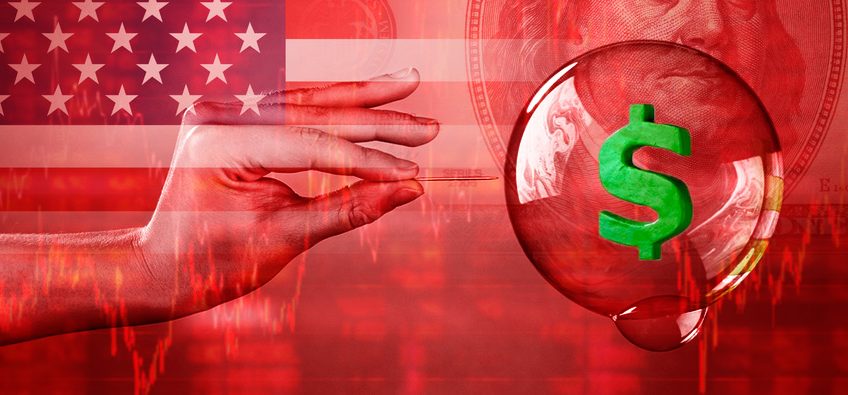
Beware the Mother of all Market Bubbles

Market bubbles don’t just happen. They are the result of the government or its financial arm artificially creating excesses money and credit conditions. Fractional reserve banking, policies like Quantitative Easing, outright money printing, and interest rate manipulations are the tools they use to create these excesses, sending misleading signals to investors and businesses alike.
The pain of bubbles popping – the unemployment, the impoverishment of millions, the bankruptcies, the loss of families’ hard-earned financial security, even the loss of freedom and the ruin of entire countries – seem like they should be reason enough for bubble policies to be avoided in favor of sound, gold based monetary systems. But the inevitable suffering of the people is never enough to stop the bubble-blowers.
It never is.
Why do governments and central bankers alike engage in bubble economics and oppose sound, gold based monetary systems? The answer is simple enough: A gold-based monetary system disempowers them. Since the government or the central bank can’t simple create gold out of nothing, in imposes an unwelcome discipline on governments and politician. They are no longer free to buy votes in the way the have grown accustomed to, or to fund unaffordable foreign wars, or to enrich powerful cronies.
We are well past the days of a financially disciplined state. For evidence, look no further than our trillion dollar deficits and $23 trillion in national debt.
Two Fed bubbles have already burst in this young century. When the dot com bubble burst in 2000, the Nasdaq market lost 80 percent of its value. When the housing bubble popped, it didn’t just cost millions of Americans their homes; between October 2017 and March 9, the stock market fell by over 50 percent.
But, lessons never learned, now the Fed is inflating the biggest bubble of all.
But it’s not the “Mother of All Bubbles” because we say so. It’s because it’s bigger than any bubble that has gone before.
In any case, Joe Zidle, a chief investment strategist at Blackstone, trotted out the “Mother” term for our current bubble the other day, observing that global sovereign (government) debt is set to join a long list of historical bubbles.
The end of a cycle comes with ample warning, observes Zidle. “Many seemingly unrelated signs appeared during the housing bubble: skyrocketing property prices and excess speculation on raw land, the failure of auction rate securities, a money market fund breaking the buck (i.e., when its net asset value falls below one dollar) and the failure of an asset-backed hedge fund. In retrospect, the role that each of these phenomena played in the ensuing meltdown was obvious.”
Now Zidle surveys some of the warning signs in our current bubble. They include $13 trillion in negative interest rate debt, the failure of the overnight repo market that the Fed keep inflating, the collapse of manufacturing, and an ongoing trade war.
These aren’t random and unrelated events. “Every cycle ends with excesses. The warnings are normally subtle and usually dismissed.”
Among all the warning signs of this cycle’s excesses, sovereign debt stands out, says Zidle. “Every cycle ends with excesses. The warnings are normally subtle and usually dismissed. This cycle’s excess is sovereign debt.”
He calls the bubble in sovereign debt, which is now approaching $70 trillion, the Mother of All Bubbles.
To invest in gold and silver safely now, call or visit with a knowledgeable RME Gold professional. Don’t be caught up short when the Mother of All Bubble bursts.
